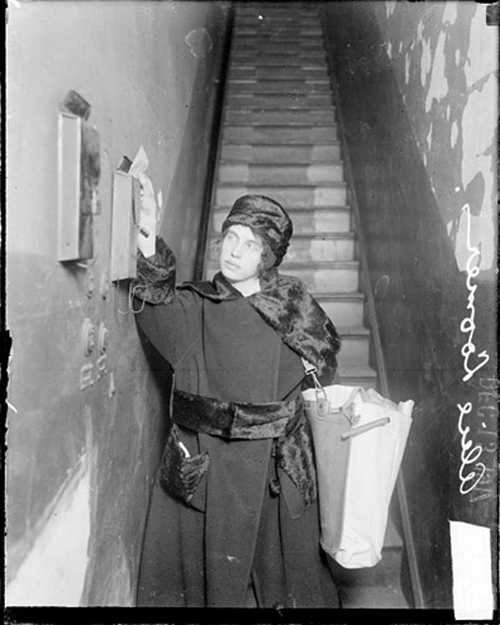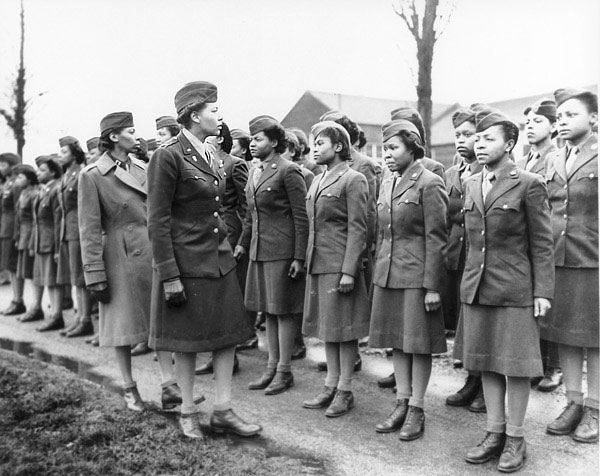
Well into the 20th century, carrying mail in America’s cities was man’s work. In 1917, a number of city carriers quit their jobs, unhappy with “unsatisfactory working conditions… and the small pay for work performed.”1 Faced with labor unrest on top of the already meager labor shortage due to the First World War, the Post Office Department decided to experiment2 with female carriers, even though “there is a grave doubt in the minds of those familiar with the every-day work of letter carriers in the city delivery service whether women could stand the strain for any length of time without seriously impairing their health.”3 Two women were hired for positions that were not to exceed ninety days (and without having to take the Civil Service exam).4 While men worried that women might not be able to carry mailbags, they forgot that most women had some experience with physical labor. As “a little brunette with snapping black eyes” put it, “I’d like to know if it would be any harder for me to carry a postbag weighing anywhere from 50 to 110 pounds than it is for my sister to carry around her twin babies?”5


In 1918, the Man-Power Bill enabled soldiers’ wives to take the Civil Service Exam and enter the Post Office.6 The bill was a more official means of dealing with the labor shortage. Women carriers gained badly needed extra income while their husbands served abroad. In recognition of a state of war emergency, concerns about “womanly modesty” became less pressing.7 At the end of the war, most of the newly-hired women resigned as veterans returned to pick up where they left off as carriers.
When Postmaster General Will Hays took office in 1921, he had even bigger aspirations for including women in the Post Office. He “set a precedent in the federal service… [that would] have an important effect in establishing for women the full rights of citizenship intended by [the recently ratified] nineteenth amendment to the constitution”8 by lifting ex-Postmaster General Henry C. Payne’s ban on married women in the Post Office.

Courtesy U.S. Army Women’s Museum Archives
Employment of women by the Post Office Department increased again during the Second World War. In 1943, Postmaster General Frank Walker announced, “it appears that ultimately, as our armed forces increase, the postal service must be maintained by the utilization of a large number of women and men above the draft age.”9 He clarified that thought by announcing that women would not carry the mail. An official explained, “that was tried last war and again more recently without success… [as] women cannot stand the strain of carrying even half the maximum load of 50 pounds.”10 Walker was forced to retract this statement, after over five percent of his carrier force was serving abroad by 1943.11
Following the war, general employment of women in the Post Office rose significantly throughout the 1950s from 22.1 % in the 1940s to 33.0% in the 1960s.12 That increase still represented less than one percent of all carriers in 1955.
